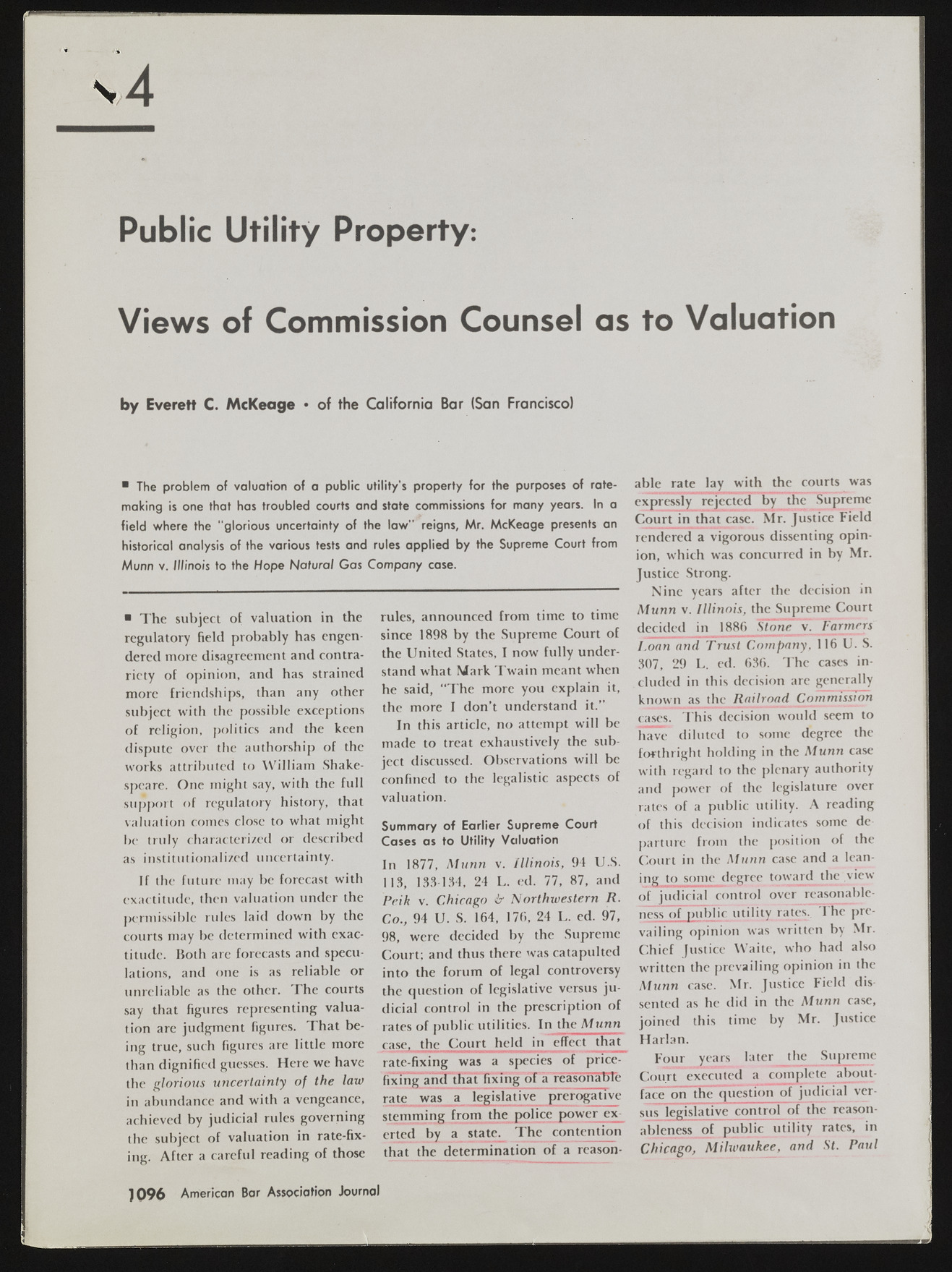Copyright & Fair-use Agreement
UNLV Special Collections provides copies of materials to facilitate private study, scholarship, or research. Material not in the public domain may be used according to fair use of copyrighted materials as defined by copyright law. Please cite us.
Please note that UNLV may not own the copyright to these materials and cannot provide permission to publish or distribute materials when UNLV is not the copyright holder. The user is solely responsible for determining the copyright status of materials and obtaining permission to use material from the copyright holder and for determining whether any permissions relating to any other rights are necessary for the intended use, and for obtaining all required permissions beyond that allowed by fair use.
Read more about our reproduction and use policy.
I agree.Information
Digital ID
Permalink
Details
More Info
Rights
Digital Provenance
Publisher
Transcription
Public Utility Property Views of Commission Counsel as to Valuation by Everett C. McKeage • of the California Bar (San Francisco) ? The problem of valuation of a public utility’s property for the purposes of ratemaking is one that has troubled courts and state commissions for many years. In a field where the “ glorious uncertainty of the law" reigns, Mr. McKeage presents an historical analysis of the various tests and rules applied by the Supreme Court from Munn v. Illinois to the Hope Natural Gas Company cose. ? Th e subject of valuation in the regulatory field probably has engendered more disagreement and contrariety of opinion, and has strained more friendships, than any other subject with the possible exceptions of religion, politics and the keen dispute over the authorship of the works attributed to William Shakespeare. One might say, with the full support of regulatory history, that valuation comes close to what might be truly characterized or described as institutionalized uncertainty. If the future may be forecast with exactitude, then valuation under the permissible rules laid down by the courts may be determined with exactitude. Both arc forecasts and speculations, and one is as reliable or unreliable as the other. Th e courts say that figures representing valuation are judgment figures. Th at being true, such figures are little more than dignified guesses. Here we have the glorious uncertainty of the law in abundance and with a vengeance, achieved by judicial rules governing the subject of valuation in rate-fixing. After a careful reading of those rules, announced from time to time since 1898 by the Supreme Court of the United States, I now fully understand what Mark Twain meant when he said, “ Th e more you explain it, the more I don’t understand it.” In this article, no attempt will be made to treat exhaustively the subject discussed. Observations will be confined to the legalistic aspects of valuation. Summary of Earlier Supreme Court Cases as to Utility Valuation In 1877, M unn v. Illinois, 94 U.S. 113, 133 134, 24 L. ed. 77, 87, and Prik v. Chicago ir Northwestern R. Co., 94 U. S. 164, 176, 24 L. ed. 97, 98, were decided by the Supreme Court; and thus there was catapulted into the forum of legal controversy the question of legislative versus judicial control in the prescription of rates of public utilities. In the Munn case, the Court held in effect jhat_ rate-fixing was a species of price-fixing ancf that fixing of a reasonable rate was a legislative prerogative stemming from the police power ex-erted by a state^ Th e contention that the determination of a reasonable rate lay with the courts was expressly rejected by the Supreme Court in that case. Mr. Justice Field rendered a vigorous dissenting opinion, which was concurred in by Mr. Justice Strong. Nine years after the decision in Munn v. Illinois, the Supreme Court decided in 1886 Stone v. Farmers Loan and Trust Company. 116 U. S. 307, 29 L. ed. 636. Th e cases included in this decision are generally known as the Railroad Commission cases. This decision would seem to have diluted to some degree the forthright holding in the M unn case with regard to the plenary authority and power of the legislature over rates of a public utility. A reading of this decision indicates some de parture from the position of the Court in the Munn case and a leaning to some degree toward the view of judicial control over reasonable-ness of public utility rates. 1 he prevailing opinion was written by Mr. Chief Justice Waite, who had also written the prevailing opinion in the M unn case. Mr. Justice Field dis sented as he did in the Munn case, joined this time by Mr. Justice Harlan. Four years later the Supreme Court executed a complete about face on the question of judicial versus legislative control of the reasonableness of public utility rates, in Chicago, Milwaukee, and St. Paul 1096 American Bar Association Journal

